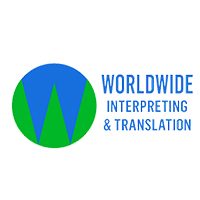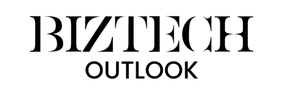
Worldwide Interpreting & Translation: Connecting Communities Through Language
Language is more than words - it’s about access, rights, and connection. Biz Tech Outlook sat down with Worldwide Interpreting & Translation to discuss their journey, their innovations, and how they continue to shape the future of communication after 30 years in the industry
How did Worldwide Interpreting & Translation get its start? Was there a personal story or turning point that inspired it?
Worldwide Interpreting & Translation began from a simple but powerful realization: communication is the foundation of justice, healthcare, education, and human connection. More than 30 years ago, our founders saw people in Australia struggling to access essential services because they could not communicate in English. That gap wasn’t just about words, it was about dignity, rights, and opportunities. What began as a grassroots initiative to provide professional interpreting in hospitals and courts quickly grew into a national operation, built on the belief that everyone deserves to be understood.
You’ve been in this space for over 30 years. How has the way you approach bridging language and cultural gaps changed along the way?
When we started, the focus was almost entirely on face-to-face interpreting and certified document translation. Over time, globalization and technology reshaped the industry. Today, we manage video and phone interpreting, remote conference solutions, subtitling, and even AI-assisted language services. But one thing hasn’t changed: our commitment to cultural intelligence. We’ve learned that bridging gaps isn’t just about fluency, it’s about understanding context, nuance, and human emotion.

Covering more than 350 languages sounds massive. What does it really take to keep the quality consistent across so many different voices?
Quality control is the backbone of our operation. Every interpreter and translator is carefully vetted, with many holding NAATI certification, the gold standard in Australia. We don’t just test language skills; we look at cultural competence, professionalism, and ethical judgment. Then we provide ongoing training and feedback loops. Finally, our project management system ensures that every assignment, whether in a rare language like Sylheti or a global one like Spanish, follows the same rigorous standards.
In areas like healthcare and law, even the smallest misinterpretation can have huge consequences. How do your certified interpreters and translators give people that sense of trust?
Trust is earned through preparation and accountability. In legal settings, our interpreters understand courtroom protocol and maintain impartiality. In healthcare, they are trained to handle sensitive information while protecting patient privacy. Certification, combined with years of experience, reassures clients that they are not just getting a bilingual speaker, they’re getting a trained professional who can safeguard meaning in high-stakes environments.
AI is shaking up the industry everywhere. How do you make sure technology helps rather than replaces the human side of communication?
We view AI as a partner, not a replacement. Automated tools are excellent for speeding up tasks like first-draft translations or live captioning. But nuance, tone, and cultural appropriateness still require a human touch. Our approach is “human-led, technology-assisted.” AI handles efficiency, while people ensure accuracy and empathy. That balance lets us scale without sacrificing quality.
Beyond interpreting and translation, you also do subtitling, dubbing, and live broadcasting. Which of these feels like the fastest-growing part of your work right now?
Audiovisual services, especially subtitling and live broadcasting, are growing at an incredible pace. Businesses, governments, and even community organizations are communicating through video more than ever before. Providing accessible, multilingual content isn’t a “nice to have” anymore; it’s essential for global reach. Our investments in this space have positioned us at the forefront of multilingual media communication.
Can you think of a moment where your team’s work didn’t just translate words but changed the outcome for a client or community?
One that stands out was during the pandemic, when public health messages needed to reach refugee and migrant communities in dozens of languages. Our interpreters and translators worked around the clock, ensuring that critical information about vaccines, restrictions, and safety reached people who would otherwise have been excluded. That wasn’t just about language, it was about saving lives.
With so many competitors out there, what do you think makes Worldwide Interpreting & Translation stand out in a crowded market?
Three things: our scale, our standards, and our service. Few companies can offer 350+ languages at NAATI-certified quality. Fewer still can combine that with personalized service, understanding the specific needs of a law firm, a hospital, or a multinational corporation. We’re large enough to handle complex projects but small enough to still care about every client interaction.
Finding and keeping great linguists can’t be easy. How do you bring the right people on board and make sure they feel supported?
Recruitment is constant, especially for rare languages. We partner with community organizations, universities, and professional associations to find talent. Once on board, interpreters and translators receive mentorship, clear protocols, and reliable payment structures. We also recognize that linguists are professionals, not commodities. Respect and fair conditions are key to retaining them.
When you look ahead, what do you see as the future of language services here in Australia and around the world?
The future is hybrid. Technology will make services faster and more accessible, while the demand for human expertise will only deepen in critical areas like law, medicine, and diplomacy. In Australia, migration and multiculturalism will continue to drive demand for rare languages. Globally, we expect growth in audiovisual and AI-assisted services, with a strong emphasis on cultural adaptation.
On a personal note, what drives you as CEO? What’s the part of the job that still excites you after all these years?
What excites me is impact. Knowing that an interpreter helped a patient understand a diagnosis, or that a translation gave someone the chance to work, study, or reunite with family – that’s powerful. Leading a team that makes those connections possible still motivates me every single day.
For your leadership team, what do you see as the biggest opportunities and challenges on the horizon?
Opportunities lie in scaling AI-enabled solutions, expanding into new markets, and deepening partnerships with global institutions. Challenges include maintaining quality across rapid growth, staying ahead of regulatory changes, and ensuring interpreter wellbeing in an increasingly demanding environment. But challenges keep us sharp, and we welcome them.
“Communication isn’t just about words – it’s about dignity, rights, and opportunities.”
“The future of language services is hybrid: fast, tech-enabled, but deeply human.”
“Every successful interpretation or translation is a bridge to opportunity.”


Company Name : Worldwide Interpreting and
Translation
Website : https://worldwideinterpreters.com.au/
Management Team
Arora Ren | Managing Director







